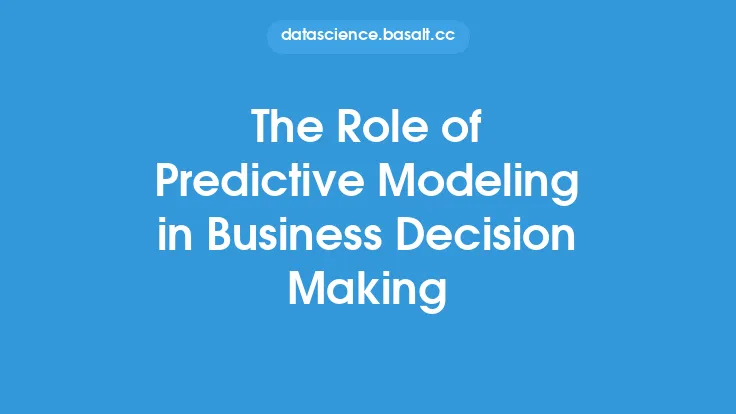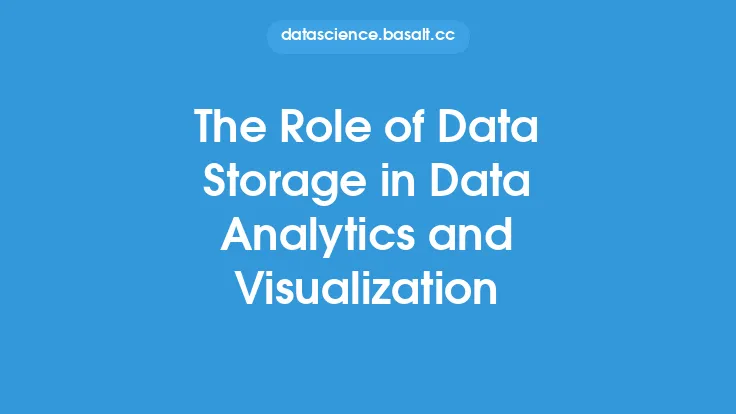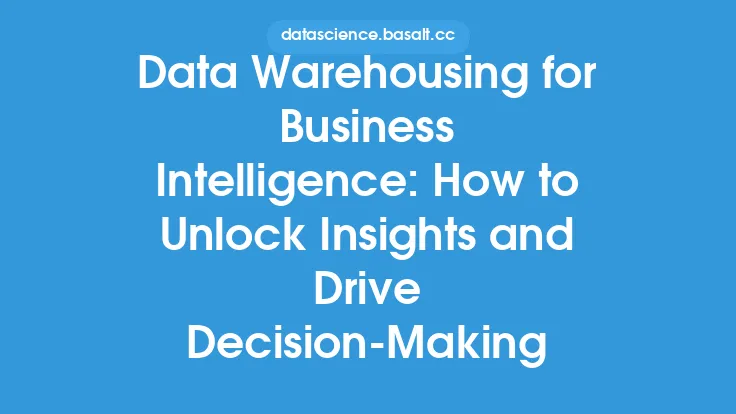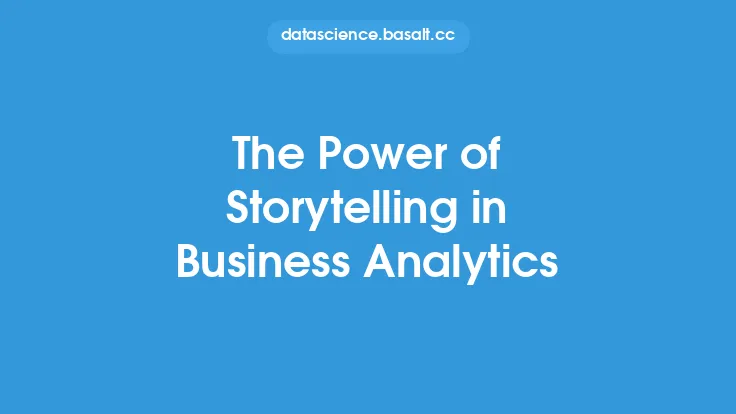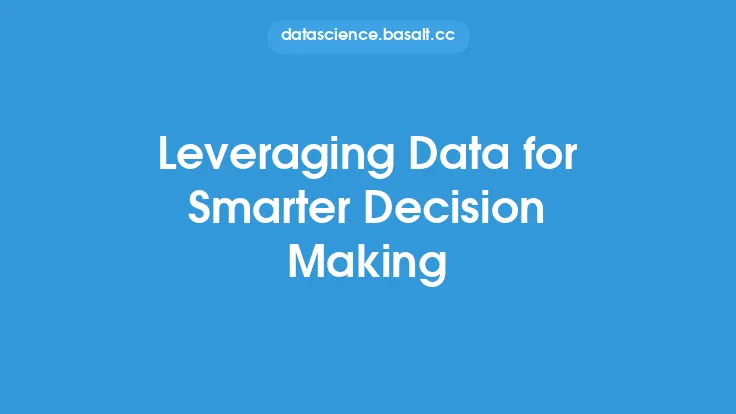In today's fast-paced business landscape, organizations are constantly seeking ways to stay ahead of the competition and make informed decisions. One key strategy that has gained significant attention in recent years is the use of predictive analytics. By leveraging advanced statistical models and machine learning algorithms, businesses can forecast future trends, identify potential risks, and uncover new opportunities. However, the complexity of predictive analytics can make it challenging to interpret and communicate insights to stakeholders. This is where visualization comes in – a powerful tool that can help businesses to effectively leverage predictive analytics and drive better decision-making.
Introduction to Predictive Analytics
Predictive analytics is a subset of business analytics that deals with the use of statistical models and machine learning algorithms to predict future events or behaviors. It involves the analysis of historical data to identify patterns and relationships, which are then used to forecast future outcomes. Predictive analytics can be applied to a wide range of business problems, including customer churn prediction, demand forecasting, and risk assessment. The goal of predictive analytics is to provide businesses with actionable insights that can inform strategic decisions and drive growth.
The Role of Visualization in Predictive Analytics
Visualization plays a critical role in predictive analytics, as it enables businesses to communicate complex insights and patterns in a clear and intuitive way. By using visualizations such as charts, graphs, and heat maps, businesses can illustrate the relationships between different variables, identify trends and patterns, and highlight areas of risk or opportunity. Visualization can also help to facilitate collaboration and communication among stakeholders, ensuring that everyone is aligned and working towards the same goals. Furthermore, visualization can help to identify biases and errors in predictive models, enabling businesses to refine and improve their analytics capabilities.
Types of Visualizations for Predictive Analytics
There are several types of visualizations that can be used to support predictive analytics, including:
- Scatter plots: These are useful for illustrating the relationships between two or more variables, such as the relationship between customer age and purchase behavior.
- Heat maps: These are useful for highlighting areas of high density or activity, such as customer clustering or geographic hotspots.
- Time series plots: These are useful for illustrating trends and patterns over time, such as seasonal fluctuations or long-term growth.
- Decision trees: These are useful for illustrating the decision-making process and identifying key factors that influence outcomes.
- Network diagrams: These are useful for illustrating complex relationships and interactions, such as customer networks or supply chains.
Best Practices for Visualizing Predictive Analytics
To get the most out of visualization in predictive analytics, businesses should follow several best practices, including:
- Keep it simple: Avoid using complex or overly technical visualizations that may confuse or intimidate stakeholders.
- Use color effectively: Use color to draw attention to key insights or patterns, but avoid using too many colors or overly bright colors that may be distracting.
- Use interactive visualizations: Interactive visualizations, such as dashboards or reports, can enable stakeholders to explore data in more detail and ask their own questions.
- Provide context: Provide context and background information to help stakeholders understand the insights and recommendations being presented.
- Use storytelling techniques: Use storytelling techniques, such as narratives or anecdotes, to make insights more engaging and memorable.
Technical Considerations for Visualizing Predictive Analytics
From a technical perspective, visualizing predictive analytics requires a range of skills and tools, including:
- Data preparation: Data must be cleaned, transformed, and formatted for analysis and visualization.
- Statistical modeling: Statistical models and machine learning algorithms must be applied to the data to generate predictions and insights.
- Data visualization tools: Data visualization tools, such as Tableau or Power BI, must be used to create interactive and dynamic visualizations.
- Programming languages: Programming languages, such as R or Python, may be used to create custom visualizations or automate analytics workflows.
- Cloud computing: Cloud computing platforms, such as Amazon Web Services or Microsoft Azure, may be used to support large-scale analytics and visualization workloads.
Real-World Applications of Visualization in Predictive Analytics
Visualization is being used in a wide range of real-world applications, including:
- Customer churn prediction: Businesses are using visualization to identify customers who are at risk of churning and develop targeted retention strategies.
- Demand forecasting: Businesses are using visualization to forecast demand and optimize inventory management and supply chain operations.
- Risk assessment: Businesses are using visualization to identify potential risks and develop strategies to mitigate them.
- Marketing optimization: Businesses are using visualization to optimize marketing campaigns and improve customer engagement.
- Financial forecasting: Businesses are using visualization to forecast financial performance and identify areas for cost reduction and improvement.
Conclusion
In conclusion, visualization is a powerful tool that can help businesses to effectively leverage predictive analytics and drive better decision-making. By using visualizations to communicate complex insights and patterns, businesses can facilitate collaboration and communication among stakeholders, identify biases and errors in predictive models, and drive growth and improvement. Whether you are a business leader, analyst, or IT professional, understanding the role of visualization in predictive analytics is essential for success in today's fast-paced and competitive business landscape.
